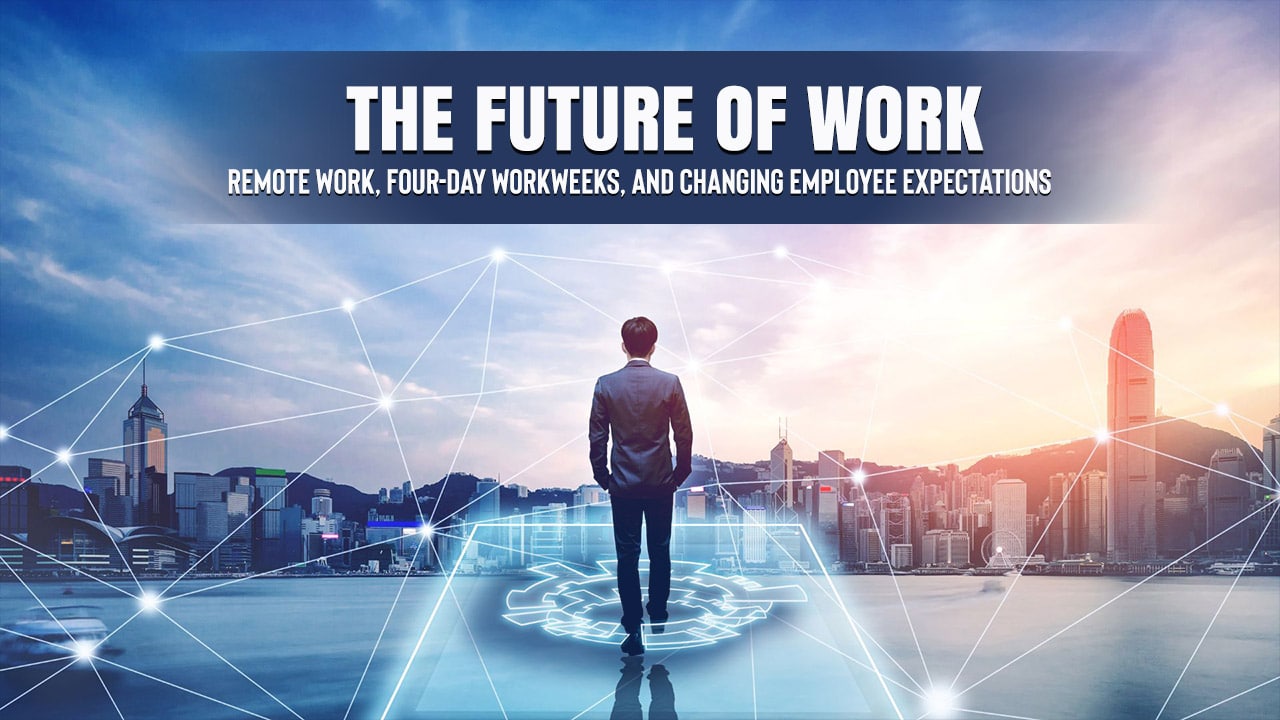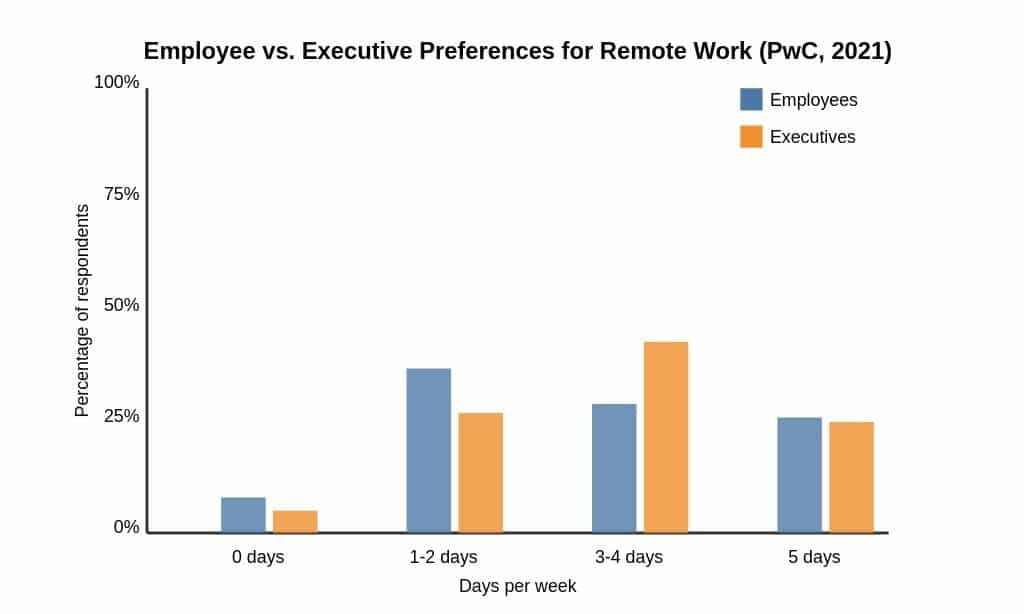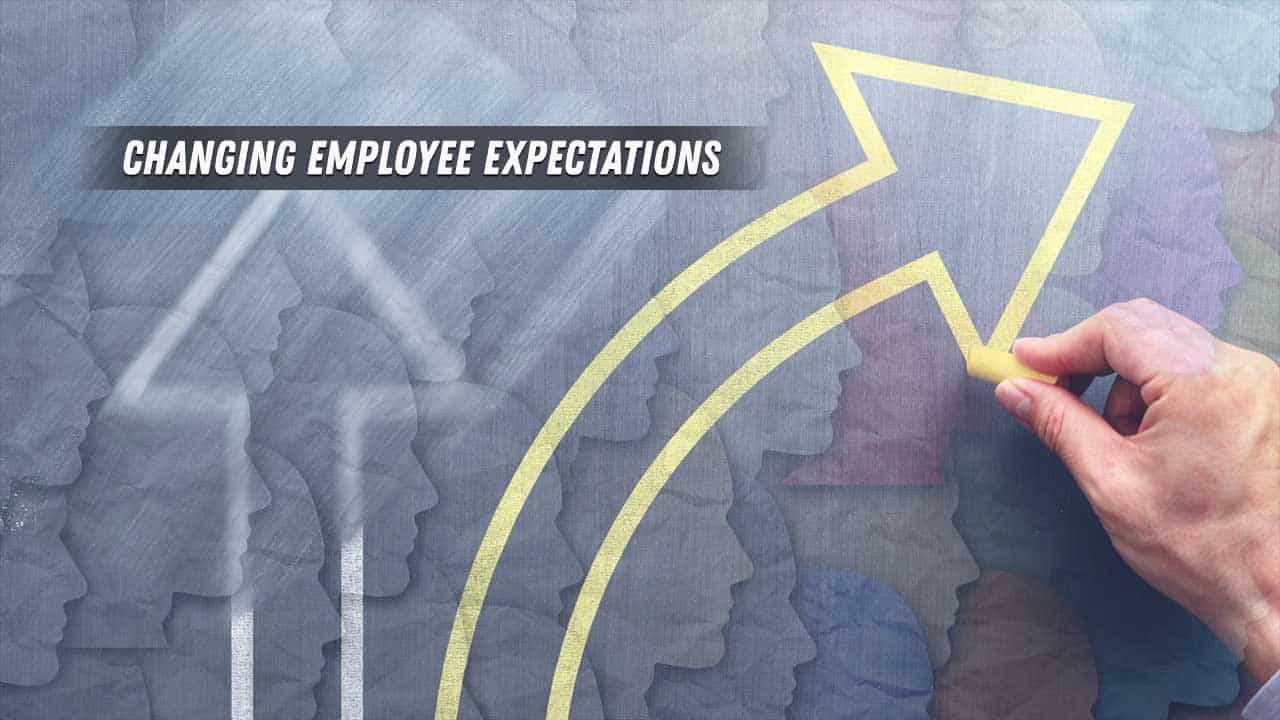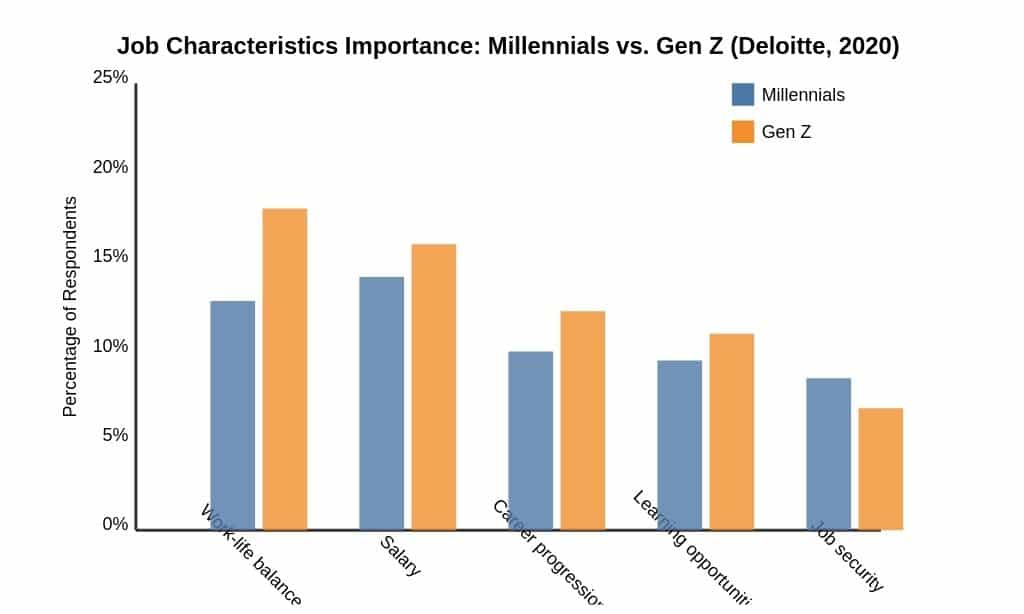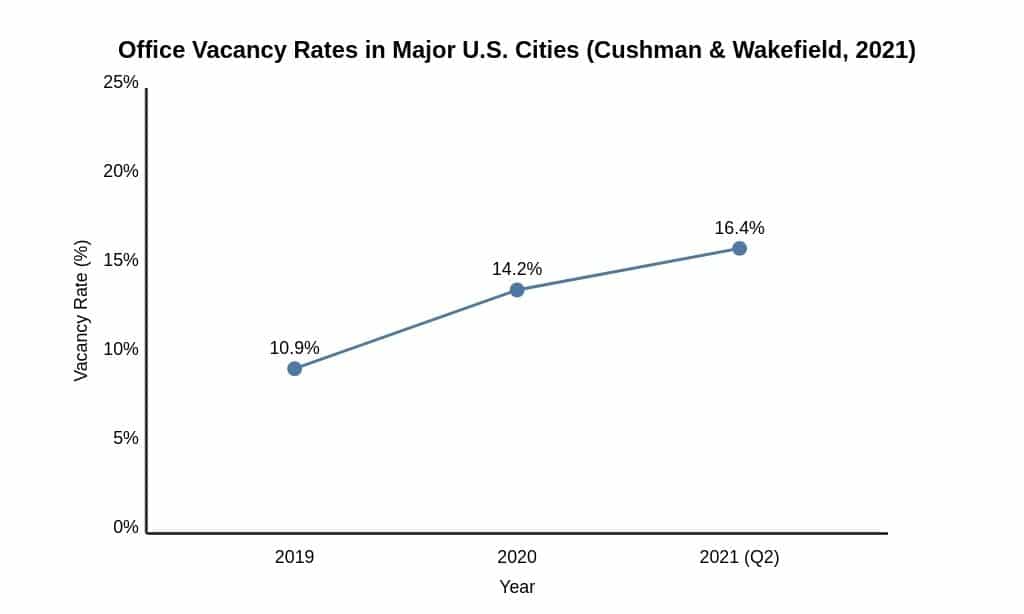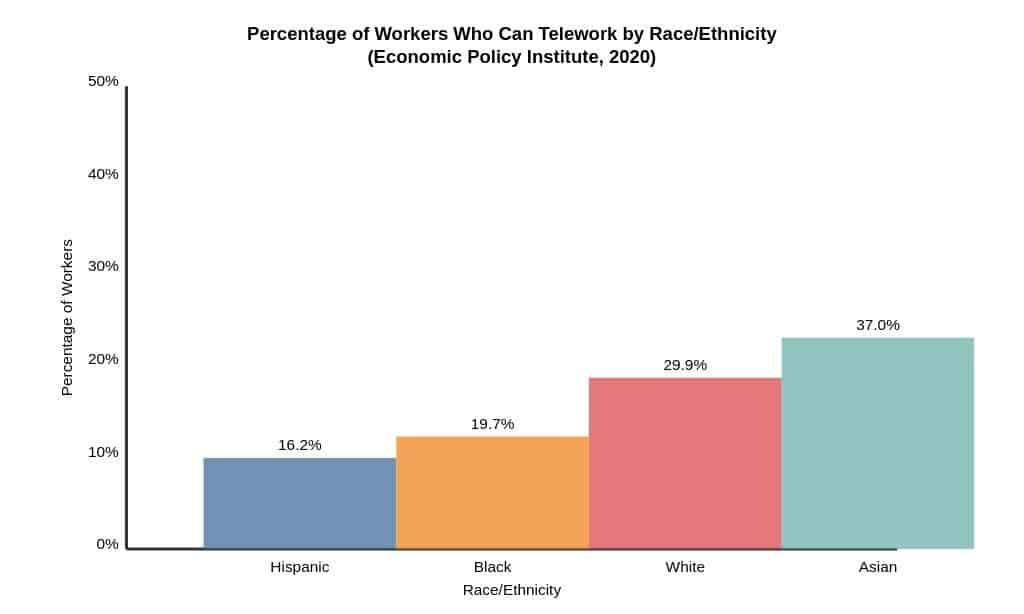In the ever-evolving landscape of human endeavor, few aspects of our lives have undergone as radical a transformation in recent years as the concept of work itself. The traditional nine-to-five office model, a staple of professional life for generations, is rapidly giving way to more flexible, technology-driven approaches that promise to reshape not just how we work, but how we live, interact, and define ourselves in society.
As we stand on the cusp of this new era, three key trends have emerged as harbingers of the future of work: the widespread adoption of remote work, the growing interest in four-day workweeks, and the shifting expectations of employees regarding their work-life balance and career trajectories.
These developments, accelerated by the global COVID-19 pandemic and enabled by rapid technological advancements, are not mere temporary adjustments but signal a fundamental reimagining of the relationship between employees, employers, and the very nature of work itself.
This editorial aims to explore these transformative trends in depth, examining their origins, current manifestations, and potential long-term implications for individuals, businesses, and society at large. We will delve into the latest research, analyze real-world case studies, and consider the economic, social, and cultural ramifications of these changes.
Furthermore, we will address the challenges and concerns that arise from these new work models, including issues of equity, productivity, and mental health.
As we navigate this complex landscape, it becomes clear that the future of work is not a distant concept but a reality that is unfolding before our eyes. The choices we make today – as individuals, organizations, and policymakers – will shape the world of work for generations to come.
It is our hope that this exploration will contribute to a more informed and nuanced understanding of these critical issues, fostering a dialogue that can guide us towards a future of work that is more flexible, fulfilling, and equitable for all.
Future of Work: The Rise of Remote Work
The concept of remote work is not entirely new. As early as the 1970s, futurist Alvin Toffler predicted in his book “The Third Wave” that technology would eventually allow a significant portion of the workforce to work from home. However, it wasn’t until the widespread adoption of high-speed internet and advanced communication technologies in the early 21st century that remote work began to gain traction.
In 2010, the U.S. Census Bureau reported that only about 4.3% of the workforce worked primarily from home. By 2018, this figure had grown to 5.3%, showing a gradual but steady increase (U.S. Census Bureau, 2019). However, it was the COVID-19 pandemic that catapulted remote work from a growing trend to a necessity for millions of workers worldwide.
Impact of COVID-19
The global pandemic served as an unprecedented catalyst for remote work adoption. According to a Pew Research Center survey conducted in October 2020, 71% of American workers who said their job responsibilities could be done from home were working from home all or most of the time. This was a significant increase from just 20% who said they worked from home prior to the pandemic (Pew Research Center, 2020).
The sudden shift to remote work was not without challenges. Many companies had to rapidly adapt their infrastructure, policies, and management practices to accommodate a distributed workforce. Employees, too, had to adjust to new ways of collaborating, managing time, and balancing work and personal life in a home environment.
Current Trends and Statistics
As we move beyond the immediate impact of the pandemic, it’s clear that remote work is here to stay, albeit in evolving forms. A survey by Buffer in 2021 found that 97.6% of employees would like to work remotely, at least some of the time, for the rest of their careers (Buffer, 2021). This desire is reflected in the plans of many major companies:
- Twitter announced in May 2020 that employees could work from home “forever” if they choose.
- Facebook expects half of its workforce to be remote within the next 5-10 years.
- Shopify has declared itself a “digital by default company,” with most employees working remotely permanently.
However, the future of work is likely to be more nuanced than a simple binary choice between office and home. Many companies are exploring hybrid models that combine remote and in-office work. A PwC survey of 133 executives and 1,200 office workers in the US found that 55% of employees would prefer to work remotely at least three days a week, while 68% of executives believe employees should be in the office at least three days a week (PwC, 2021).
This data highlights a potential disconnect between employee preferences and executive expectations, suggesting that the negotiation of remote work policies will be a critical issue in the coming years.
The shift to remote work has significant implications beyond just where people work. It’s reshaping urban landscapes, altering real estate markets, and changing patterns of consumption. A study by Upwork estimates that between 14-23 million Americans are planning to move as a result of remote work, with many leaving major cities for smaller towns or suburban areas (Upwork, 2020).
As we continue to navigate the future of work, it’s clear that the rise of remote work is not just a temporary response to a global crisis, but a fundamental shift in how we conceive of and structure work. The challenge now lies in harnessing the benefits of this flexibility while addressing the new challenges it presents.
Future of Work: The Four-Day Workweek Revolution
The concept of a four-day workweek is not as recent as it might seem. In 1956, then-Vice President Richard Nixon predicted that a four-day work week was in the “not too distant future.” However, it’s only in recent years that this idea has gained serious traction among businesses and policymakers.
The rationale behind the four-day workweek is multifaceted:
- Increased productivity: Proponents argue that condensing the workweek can lead to increased focus and efficiency.
- Improved work-life balance: An extra day off can significantly enhance employees’ quality of life and job satisfaction.
- Reduced costs: For businesses, it can mean lower overhead costs and potentially increased employee retention.
- Environmental benefits: Fewer commuting days can lead to reduced carbon emissions.
Case Studies and Experiments
Several high-profile experiments with the four-day workweek have captured global attention:
- Microsoft Japan: In 2019, Microsoft Japan implemented a four-day workweek for a month, resulting in a 40% increase in productivity.
- Perpetual Guardian, New Zealand: This company permanently adopted a four-day workweek after a successful trial in 2018. They reported a 20% increase in productivity and a 45% increase in work-life balance.
- Iceland’s nationwide trials: Between 2015 and 2019, Iceland conducted the world’s largest trial of a shorter workweek in the public sector, involving 2,500 workers. The trials were deemed an “overwhelming success,” with productivity remaining the same or improving in the majority of workplaces.
- Spain’s national pilot: In 2021, Spain announced a pilot program for companies interested in testing a four-day workweek without reducing employees’ pay.
| Company/Country | Year | Participants | Key Findings |
|---|---|---|---|
| Microsoft Japan | 2019 | 2,300 | 40% productivity increase |
| Perpetual Guardian (NZ) | 2018 | 240 | 20% productivity increase, 45% better work-life balance |
| Iceland | 2015-2019 | 2,500 | Productivity maintained or improved |
| Spain | 2021-ongoing | 200 companies | Results pending |
[Table: Four-Day Workweek Experiments]
Potential Benefits and Challenges
While the potential benefits of a four-day workweek are compelling, implementation is not without challenges:
Benefits:
- Improved work-life balance and employee well-being
- Potential for increased productivity and efficiency
- Reduced overhead costs for businesses
- Environmental benefits from reduced commuting
- Potential to create more jobs by spreading work hours
Challenges:
- Difficulty in implementation across all sectors (e.g., healthcare, hospitality)
- Potential for increased stress if workload is not adjusted
- Coordination issues with clients or partners on different schedules
- Initial costs of restructuring work processes
- Resistance from traditional management mindsets
As we continue to explore the viability of the four-day workweek, it’s clear that its implementation will require careful planning, flexibility, and a willingness to challenge long-held assumptions about work and productivity. The growing body of evidence from various experiments and trials suggests that, when implemented thoughtfully, a shorter workweek can benefit both employees and employers, potentially reshaping our understanding of work-life balance in the 21st century.
Future of Work: Changing Employee Expectations
The landscape of work is not only being reshaped by new models like remote work and four-day workweeks but also by a fundamental shift in what employees expect from their careers and workplaces. This evolution in expectations is driven by a combination of generational change, technological advancements, and broader societal shifts.
Work-Life Balance
One of the most significant changes in employee expectations is the increased emphasis on work-life balance. A survey by Deloitte found that 16.8% of millennials evaluate career opportunities by good work-life balance, second only to salary at 18.2% (Deloitte, 2020). This shift is even more pronounced among Gen Z workers, who prioritize work-life balance above all other job characteristics.
This desire for balance is manifesting in various ways:
- Flexible working hours: Employees increasingly expect the ability to adjust their working hours to fit their personal lives.
- Unlimited or increased paid time off: Companies like Netflix, LinkedIn, and Hubspot have implemented unlimited vacation policies.
- Sabbaticals: Extended leave periods for personal growth or rejuvenation are becoming more common, even in traditionally conservative industries.
Mental Health and Well-being
The COVID-19 pandemic has accelerated a growing focus on mental health and well-being in the workplace. A survey by Mind Share Partners found that 76% of respondents agreed that mental health is now a top priority for them when considering job opportunities (Mind Share Partners, 2021).
Employees now expect:
- Mental health support and resources from their employers
- Policies that actively promote well-being, such as meditation spaces or fitness stipends
- A work culture that acknowledges and destigmatizes mental health issues
Companies are responding to these expectations. For instance, Starbucks expanded its Employee Assistance Program to offer all U.S. employees and eligible family members 20 free therapy sessions per year. Similarly, Google has implemented a comprehensive wellness program that includes on-site wellness centers and fitness classes.
Career Development and Flexibility
Today’s employees, particularly younger generations, view their careers as a journey of continuous learning and growth rather than a linear progression within a single company. This shift is reflected in changing expectations around career development:
- Continuous Learning: 94% of employees say they would stay at a company longer if it invested in their learning and development (LinkedIn, 2019).
- Skill-based Career Progression: Employees increasingly expect opportunities to develop new skills and take on new roles, even if they don’t align with traditional career ladders.
- Internal Mobility: 73% of Gen Z say they’re interested in jobs that are different from what they studied in college, indicating a desire for diverse experiences (Dell Technologies, 2020).
- Gig Economy Participation: Many employees now expect the flexibility to engage in side hustles or freelance work alongside their primary job.
To meet these expectations, companies are implementing various initiatives:
- Mastercard’s “People Principles” include a commitment to lifelong learning and internal mobility.
- AT&T’s Future Ready program invested $1 billion to help employees develop new skills for the digital economy.
- IBM’s “Open Badge” program allows employees to earn and display verifiable credentials for skills they’ve mastered.
Purpose and Values Alignment
Increasingly, employees expect their work to have meaning beyond a paycheck. They seek alignment between their personal values and their employer’s mission and practices:
- 64% of millennials won’t take a job if the potential employer doesn’t have strong corporate social responsibility practices (Cone Communications, 2019).
- 83% of millennials would be more loyal to a company that helps them contribute to social and environmental issues (Cone Communications, 2019).
This has led to a rise in “purpose-driven” organizations and an increased focus on corporate social responsibility and sustainability initiatives.
Future of Work: Technological Advancements Enabling New Work Models
The rapid evolution of technology is a key enabler of the changing work landscape. From cloud computing to artificial intelligence, technological advancements are reshaping how, where, and when work gets done.
Collaboration Tools
The shift to remote and hybrid work models has been made possible by the development of sophisticated collaboration tools:
- Video Conferencing: Platforms like Zoom, Microsoft Teams, and Google Meet have become essential for maintaining face-to-face communication in distributed teams. Zoom reported a 355% increase in revenue in the second quarter of 2020 compared to the previous year (Zoom, 2020).
- Project Management Software: Tools like Asana, Trello, and Monday.com have made it easier to coordinate tasks and track progress across dispersed teams. The global project management software market is expected to reach $9.81 billion by 2026, growing at a CAGR of 10.67% from 2019 to 2026 (Allied Market Research, 2019).
- Virtual Whiteboards: Applications like Miro and MURAL facilitate visual collaboration, replicating the experience of in-person brainstorming sessions.
- Instant Messaging: Slack, Microsoft Teams, and similar platforms have largely replaced email for quick, informal communication within teams.
| Tool Type | Percentage of Remote Workers Using |
|---|---|
| Video Conferencing | 98% |
| Instant Messaging | 95% |
| Project Management | 89% |
| Virtual Whiteboards | 67% |
| Source: Buffer State of Remote Work, 2021 |
[Table: Collaboration Tool Usage]
Productivity Software
Advancements in productivity software are helping individuals and teams work more efficiently:
- AI-powered Writing Assistants: Tools like Grammarly and OpenAI’s GPT-3 are enhancing written communication and content creation.
- Time Tracking and Focus Apps: Applications like RescueTime and Forest help workers manage their time and maintain focus in potentially distracting home environments.
- Cloud-based Office Suites: Google Workspace and Microsoft 365 allow for real-time collaboration on documents, spreadsheets, and presentations from anywhere.
- Task Automation: Zapier, IFTTT, and similar services enable workers to automate routine tasks, freeing up time for more complex work.
Cybersecurity Considerations
As work becomes increasingly digital and distributed, cybersecurity has become a critical concern:
- Virtual Private Networks (VPNs): Usage of VPNs increased by 124% in the U.S. during the first two weeks of the COVID-19 pandemic (Atlas VPN, 2020).
- Multi-Factor Authentication: Adoption of MFA has become standard practice for securing remote access to company resources.
- Zero Trust Security Models: This approach, which assumes no user or device should be automatically trusted, is gaining traction in the era of distributed work.
- Employee Training: Companies are investing more in cybersecurity awareness training for employees working from home or other remote locations.
The global cybersecurity market size is projected to grow from $217.9 billion in 2021 to $345.4 billion by 2026, at a Compound Annual Growth Rate (CAGR) of 9.7% during the forecast period (MarketsandMarkets, 2021).
As we continue to navigate the evolving landscape of work, these technological advancements will play a crucial role in shaping new work models and meeting changing employee expectations. However, they also present new challenges in terms of digital equity, work-life boundaries, and cybersecurity that will need to be addressed as we move forward.
Future of Work: Economic Implications
The shift towards remote work, four-day workweeks, and evolving employee expectations is not just changing how we work—it’s reshaping entire economies. These changes have far-reaching implications for businesses, workers, and the broader economic landscape.
Impact on Businesses
- Cost Savings: Many businesses have reported significant cost savings from remote work arrangements. A Global Workplace Analytics study estimates that a typical employer can save about $11,000 per year for every person who works remotely half of the time (Global Workplace Analytics, 2021). These savings come from reduced real estate costs, lower utility bills, and decreased overhead expenses.
- Productivity: While concerns about productivity initially slowed the adoption of remote work, many companies have reported maintained or increased productivity levels. A Stanford study of 16,000 workers over 9 months found that working from home increased productivity by 13% (Stanford News, 2020).
- Talent Pool Expansion: Remote work has allowed companies to hire from a global talent pool, potentially increasing access to skilled workers and diversity.
- Adaptation Costs: However, businesses have also faced significant costs in adapting to new work models, including investments in technology, cybersecurity, and training.
Effects on Local and Global Economies
- Urban Exodus: Remote work has accelerated migration from high-cost urban centers to smaller cities and rural areas. According to the U.S. Postal Service, nearly 16 million people moved during the first six months of the COVID-19 pandemic (MYMOVE, 2021).
- “Zoom Towns”: Some smaller towns have seen an influx of remote workers, leading to local economic booms but also raising concerns about housing affordability and infrastructure strain.
- Commercial Real Estate: The shift to remote work has significantly impacted commercial real estate markets. In major U.S. cities, office vacancy rates increased from 10.9% in 2019 to 16.4% in Q2 2021 (Cushman & Wakefield, 2021).
- Global Labor Market Shifts: Remote work has the potential to redistribute labor globally, potentially benefiting workers in lower-cost regions but also raising concerns about wage competition and job displacement in higher-cost areas.
Potential for Increased Productivity
The potential for increased productivity is a key driver behind many of these workplace changes:
- Four-Day Workweek: Early adopters of the four-day workweek have reported significant productivity gains. For instance, Microsoft Japan saw a 40% increase in productivity during their four-day workweek trial (Microsoft, 2019).
- Remote Work: A survey by Mercer found that 94% of employers said productivity was the same as or higher than it was before the pandemic, even with their employees working remotely (Mercer, 2020).
- Work-Life Balance: Improved work-life balance associated with flexible work arrangements can lead to reduced burnout and increased job satisfaction, potentially boosting long-term productivity.
However, it’s important to note that productivity gains are not universal and can depend on factors such as job type, individual preferences, and company culture. As these new work models become more widespread, more comprehensive and long-term studies will be needed to fully understand their impact on productivity.
Future of Work: Social and Cultural Shifts
The changing nature of work is driving profound social and cultural shifts that extend far beyond the workplace itself.
Changes in Urban Planning and Real Estate
- “15-Minute Cities”: The concept of urban areas where all necessities are within a 15-minute walk or bike ride is gaining traction, partly driven by the increase in remote work.
- “Hybrid” Spaces: There’s growing demand for flexible spaces that can accommodate both living and working, leading to new approaches in residential architecture and urban design.
- Suburban Revival: After years of urbanization, many suburban areas are seeing renewed interest as remote workers seek more space at lower costs.
- Co-working Spaces: Despite the rise of remote work, co-working spaces are expected to play a significant role in the future of work. The global co-working space market is projected to reach $44.23 billion by 2029, growing at a CAGR of 12.8% from 2022 to 2029 (Skyquest Technology, 2022).
Environmental Impacts
- Reduced Commuting: A study by the Centre for Research into Energy Demand Solutions found that working from home could reduce carbon emissions by 54 million tons annually in the UK alone (CREDS, 2020).
- Energy Usage: While home energy consumption has increased, this is generally outweighed by the reduction in office energy use and commuting emissions.
- Sustainable Practices: Companies are increasingly incorporating sustainability into their remote work policies, such as providing stipends for energy-efficient home office equipment.
| Factor | Impact |
|---|---|
| Annual CO2 Reduction (UK) | 54 million tons |
| Reduction in Vehicle Miles | 23 billion (US, 2021) |
| Reduction in Gasoline Consumption | 960 million gallons (US, 2021) |
| Source: CREDS (2020), Global Workplace Analytics (2021) |
[Table: Environmental Impact of Remote Work]
Evolving Social Norms
- Work-Life Integration: Rather than striving for a strict work-life balance, many are embracing a more fluid integration of work and personal life.
- Digital Etiquette: New norms are emerging around digital communication, video call behavior, and respecting boundaries in a always-connected world.
- Community Engagement: With more time spent in residential areas, there’s potential for increased local community engagement and volunteerism.
- Global Collaboration: Remote work is normalizing collaboration across time zones and cultures, potentially leading to more globally-minded workforces.
- Redefining “Professionalism”: Traditional notions of professionalism are being challenged, with greater acceptance of casual dress, flexible hours, and the visible integration of family life in work contexts.
These social and cultural shifts are still unfolding, and their long-term impacts remain to be seen. However, it’s clear that the changing nature of work is not just altering our professional lives, but reshaping our communities, our environments, and our very notions of what it means to live and work in the 21st century.
As we navigate these changes, it will be crucial to address emerging challenges such as digital inequality, the potential for increased social isolation, and the need for new forms of community-building in an increasingly distributed world. The future of work is not just about how we perform our jobs, but about how we structure our societies and live our lives.
Future of Work: Challenges and Concerns
While the evolving work landscape offers many potential benefits, it also presents significant challenges that need to be addressed.
Equity and Access Issues
- Digital Divide: Remote work relies heavily on high-speed internet and advanced technology, which are not equally accessible to all. According to the Federal Communications Commission, 21.3 million Americans lack access to high-speed broadband (FCC, 2020).
- Job Type Disparities: The ability to work remotely or benefit from flexible schedules is not equally distributed across job types. A study by the Economic Policy Institute found that only 16.2% of Hispanic workers and 19.7% of Black workers can telework, compared to 29.9% of white workers and 37% of Asian workers (Economic Policy Institute, 2020).
- Gender Inequality: Women, who often bear a disproportionate share of domestic responsibilities, may face unique challenges in remote work settings. A study by Boston Consulting Group found that working women currently spend an average of 15 hours a week more on domestic labor than men (BCG, 2020).
Potential for Overwork and Burnout
- Blurred Boundaries: Remote work can blur the lines between work and personal life, leading to longer working hours. A study by the National Bureau of Economic Research found that the average workday lengthened by 48.5 minutes in the early months of the pandemic (NBER, 2020).
- “Always On” Culture: The ease of digital communication can create pressure to be constantly available, potentially leading to stress and burnout.
- Isolation and Mental Health: Remote work can lead to feelings of isolation and disconnection, potentially impacting mental health. A survey by Buffer found that 19% of remote workers struggle with loneliness (Buffer, 2021).
Management and Oversight Difficulties
- Performance Evaluation: Traditional methods of evaluating employee performance may not be suitable for remote or flexible work arrangements, necessitating new approaches.
- Team Cohesion: Building and maintaining team culture and cohesion can be more challenging in distributed work environments.
- Training and Development: Providing effective training and development opportunities may be more complex in remote or hybrid work settings.
- Security Concerns: Distributed work environments can create new cybersecurity vulnerabilities that need to be addressed.
Future of Work: The Role of Policy and Legislation
As work models evolve, policy and legislation must adapt to ensure worker protections, address new challenges, and promote equitable access to opportunities.
Current and Proposed Laws
- Right to Disconnect: Several countries, including France and Spain, have implemented “right to disconnect” laws that give employees the legal right to avoid work emails and calls outside of working hours.
- Remote Work Regulations: Portugal passed legislation in 2021 that requires employers to contribute to workers’ home electricity and internet bills for remote work.
- Four-Day Workweek Trials: Governments in several countries, including Spain and Japan, have initiated or proposed trials of four-day workweeks.
- Flexible Work Requests: The UK’s Flexible Working Regulations give all employees the legal right to request flexible working arrangements.
International Perspectives
Different countries are approaching these changes in diverse ways:
- European Union: The EU is considering a bloc-wide “right to disconnect” law.
- United Arab Emirates: The UAE implemented a 4.5-day workweek for federal government employees in 2022, becoming the first country to do so on a national level.
- New Zealand: The government has actively encouraged employers to consider four-day workweek trials.
- Japan: The government has included promotion of optional four-day workweeks in its annual economic policy guidelines.
The Need for Updated Labor Regulations
As work models evolve, many existing labor laws and regulations may become outdated or insufficient:
- Working Time Regulations: Laws governing working hours, overtime, and rest periods may need to be updated to account for more flexible work arrangements.
- Occupational Safety and Health: Regulations may need to be expanded to cover home office environments and address the unique health and safety concerns of remote work.
- Anti-Discrimination Laws: These may need to be strengthened to prevent bias against remote workers or those with flexible schedules in hiring, promotion, and other employment decisions.
- Cross-Border Employment: The rise of remote work across national boundaries may necessitate new international agreements on taxation, social security, and labor standards.
Future of Work: Preparing for the Future
As we look ahead, individuals, businesses, and policymakers all have roles to play in shaping a future of work that is productive, equitable, and sustainable.
Skills and Adaptations Needed
- Digital Literacy: As work becomes increasingly digital, strong technology skills will be crucial across all sectors.
- Self-Management: With more autonomy in how work is structured, skills like time management, self-motivation, and setting boundaries will be increasingly important.
- Communication: Strong written and verbal communication skills are vital in distributed work environments.
- Adaptability: The ability to learn quickly and adapt to new technologies and work processes will be key in a rapidly evolving work landscape.
- Emotional Intelligence: As in-person interactions become less frequent, the ability to navigate interpersonal relationships and read emotional cues in digital environments will be crucial.
The Role of Education and Training
- Lifelong Learning: Educational institutions need to prepare students for a future of continuous learning and adaptation.
- Reskilling and Upskilling: Governments and businesses will need to invest in programs to help workers adapt to changing job requirements.
- Digital Skills Training: Initiatives to improve digital literacy across all segments of society will be crucial to ensure equitable access to future work opportunities.
Recommendations for Individuals, Businesses, and Policymakers
Individuals:
- Continuously update skills and embrace lifelong learning
- Prioritize work-life balance and mental health
- Be proactive in communication and relationship-building in digital environments
Businesses:
- Invest in robust digital infrastructure and cybersecurity
- Develop clear policies for remote and flexible work
- Focus on outcomes rather than hours worked in performance evaluations
- Prioritize employee well-being and work-life balance
Policymakers:
- Update labor laws to address new work models
- Invest in digital infrastructure to reduce the digital divide
- Implement programs to support reskilling and upskilling
- Consider trials of innovative work models like the four-day workweek
The Future of Work: Takeaways
The future of work is not a distant concept, but a reality that is unfolding before us. The rise of remote work, the growing interest in four-day workweeks, and the shifting expectations of employees are fundamentally reshaping how we think about work, productivity, and work-life balance.
These changes offer tremendous opportunities: increased flexibility for workers, potential productivity gains for businesses, and the possibility of more sustainable and family-friendly work practices. However, they also present significant challenges, from issues of equity and access to the potential for overwork and the need for new management practices.
As we navigate this transition, it’s crucial that we approach these changes thoughtfully and inclusively. We must ensure that the benefits of new work models are accessible to all, not just a privileged few. We need to be mindful of the potential pitfalls, such as the blurring of work-life boundaries and the risk of increased isolation, and work proactively to address them.
The role of policy and legislation will be crucial in shaping this future. We need forward-thinking policies that protect workers’ rights, promote equitable access to opportunities, and encourage innovative work practices while also ensuring economic vitality.
Ultimately, the future of work is not predetermined. It will be shaped by the choices we make today – as individuals, as organizations, and as societies. By embracing change, fostering innovation, and prioritizing human well-being, we have the opportunity to create a future of work that is more flexible, fulfilling, and equitable for all.
As we stand at this crossroads, let us move forward with optimism, creativity, and a commitment to building a work world that serves not just economic ends, but human flourishing in its fullest sense.
References
- Allied Market Research. (2019). Project Management Software Market. https://www.alliedmarketresearch.com/project-management-software-market
- Atlas VPN. (2020). VPN usage in the US increased by 124% during the coronavirus pandemic. https://atlasvpn.com/blog/vpn-usage-in-the-us-increased-by-124-during-the-coronavirus-pandemic
- Boston Consulting Group (BCG). (2020). Easing the COVID-19 Burden on Working Parents. https://www.bcg.com/publications/2020/helping-working-parents-ease-the-burden-of-covid-19
- Buffer. (2021). The 2021 State of Remote Work. https://buffer.com/state-of-remote-work/2021
- Centre for Research into Energy Demand Solutions (CREDS). (2020). A systematic review of the energy and climate impacts of teleworking. https://www.creds.ac.uk/publications/a-systematic-review-of-the-energy-and-climate-impacts-of-teleworking/
- Cone Communications. (2019). 2019 Millennial Employee Engagement Study. https://conecomm.com/2019-millennial-employee-engagement-study/
- Cushman & Wakefield. (2021). U.S. National Office Report Q2 2021. https://www.cushmanwakefield.com/en/united-states/insights/us-marketbeats/us-office-marketbeat
- Dell Technologies. (2020). Gen Z: The Future Has Arrived. https://www.delltechnologies.com/en-us/perspectives/gen-z.htm
- Deloitte. (2020). The Deloitte Global Millennial Survey 2020. https://www2.deloitte.com/global/en/pages/about-deloitte/articles/millennialsurvey.html
- Economic Policy Institute. (2020). Not everybody can work from home: Black and Hispanic workers are much less likely to be able to telework. https://www.epi.org/blog/black-and-hispanic-workers-are-much-less-likely-to-be-able-to-work-from-home/
- Federal Communications Commission (FCC). (2020). Eighth Broadband Progress Report. https://www.fcc.gov/reports-research/reports/broadband-progress-reports/eighth-broadband-progress-report
- Global Workplace Analytics. (2021). Latest Work-At-Home/Telecommuting/Mobile Work/Remote Work Statistics. https://globalworkplaceanalytics.com/telecommuting-statistics
- LinkedIn. (2019). 2019 Workplace Learning Report. https://learning.linkedin.com/resources/workplace-learning-report
- MarketsandMarkets. (2021). Cybersecurity Market – Global Forecast to 2026. https://www.marketsandmarkets.com/Market-Reports/cyber-security-market-505.html
- Mercer. (2020). Global Survey #5: The New Shape of Work Is Flexibility for All. https://www.mercer.com/our-thinking/career/global-talent-hr-trends.html
- Microsoft. (2019). 4-day work week boosted productivity by 40%, Microsoft Japan says. https://www.microsoft.com/en-us/microsoft-365/blog/2019/11/04/4-day-work-week-boosts-productivity/
- Mind Share Partners. (2021). 2021 Mental Health at Work Report. https://www.mindsharepartners.org/mentalhealthatworkreport-2021
- MYMOVE. (2021). COVID-19 Migration Report: People Left Big Cities, Temporary Moves Spiked In First 6 Months of COVID-19 Pandemic. https://www.mymove.com/moving/covid-19/coronavirus-moving-trends/
- National Bureau of Economic Research (NBER). (2020). COVID-19 and Remote Work: An Early Look at US Data. https://www.nber.org/papers/w27344
- Pew Research Center. (2020). How the Coronavirus Outbreak Has – and Hasn’t – Changed the Way Americans Work. https://www.pewresearch.org/social-trends/2020/12/09/how-the-coronavirus-outbreak-has-and-hasnt-changed-the-way-americans-work/
- PwC. (2021). It’s time to reimagine where and how work will get done: PwC’s US Remote Work Survey. https://www.pwc.com/us/en/library/covid-19/us-remote-work-survey.html
- Skyquest Technology. (2022). Global Coworking Space Market. https://skyquestt.com/report/coworking-space-market
- Stanford News. (2020). The productivity pitfalls of working from home in the age of COVID-19. https://news.stanford.edu/2020/03/30/productivity-pitfalls-working-home-age-covid-19/
- U.S. Census Bureau. (2019). 2019 American Community Survey 1-Year Estimates. https://www.census.gov/programs-surveys/acs
- Upwork. (2020). Economist Report: Remote Workers on the Move. https://www.upwork.com/press/releases/economist-report-remote-workers-on-the-move
- Zoom. (2020). Zoom Reports Second Quarter Results for Fiscal Year 2021. https://investors.zoom.us/news-releases/news-release-details/zoom-reports-second-quarter-results-fiscal-year-2021


